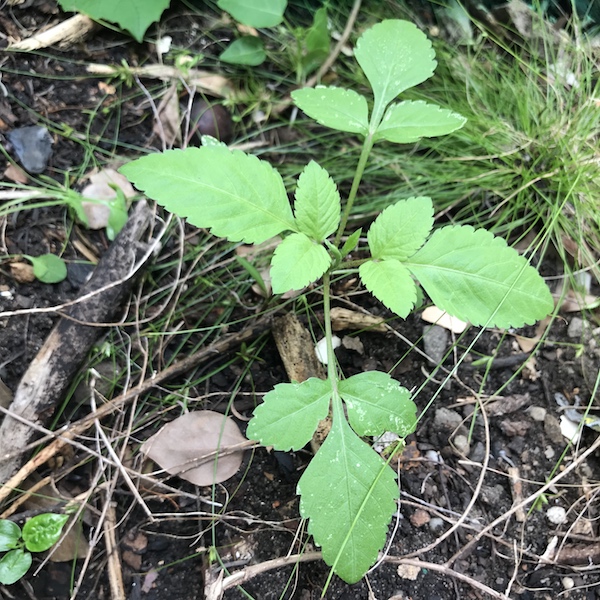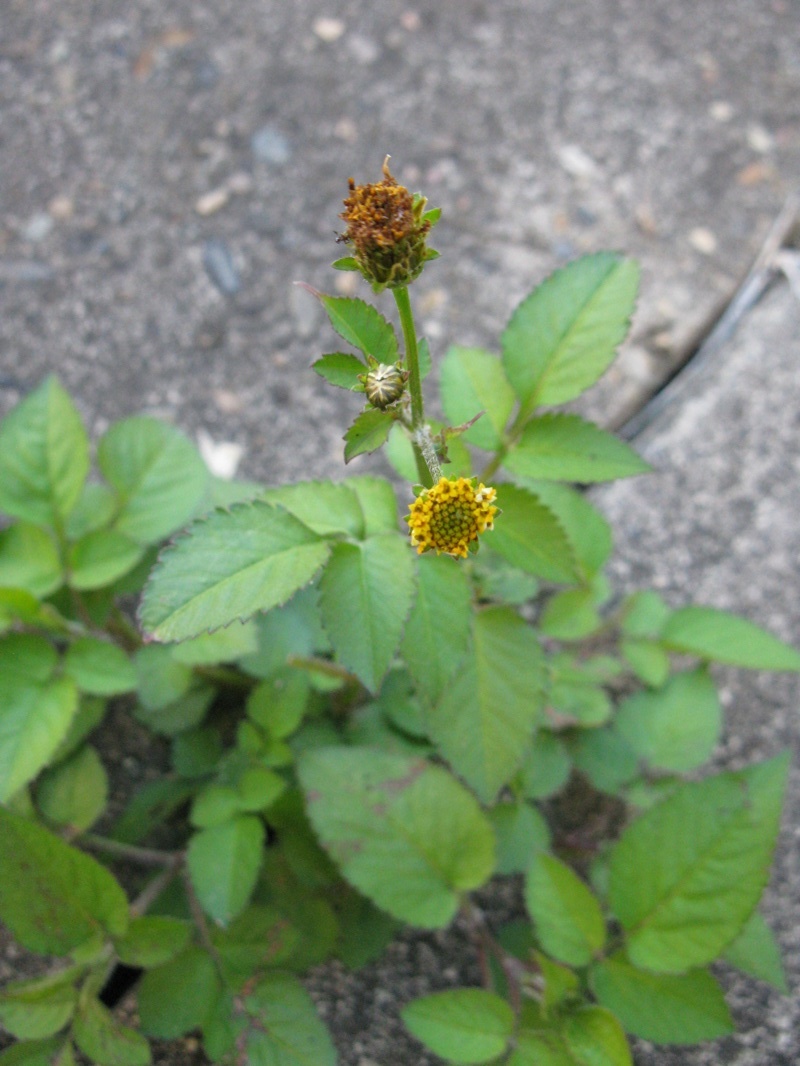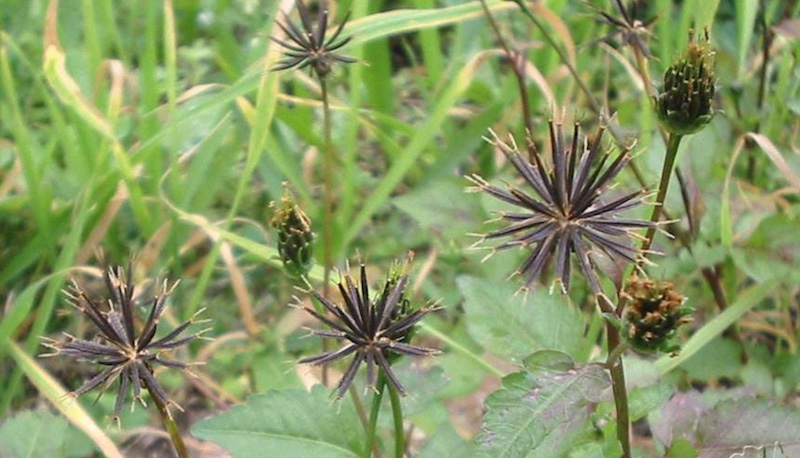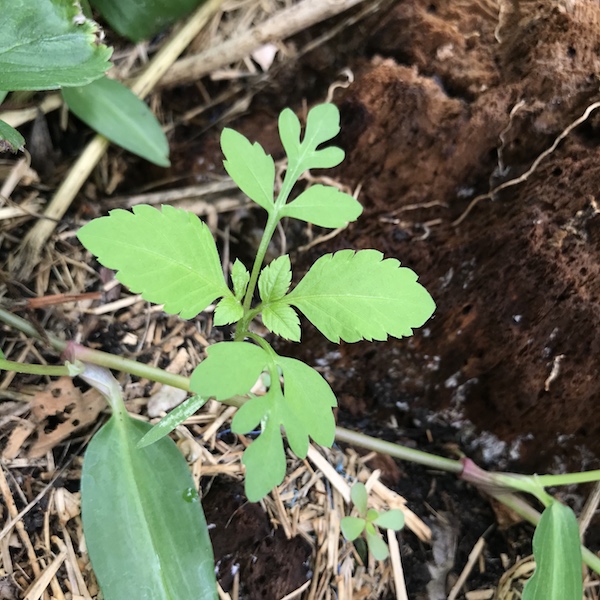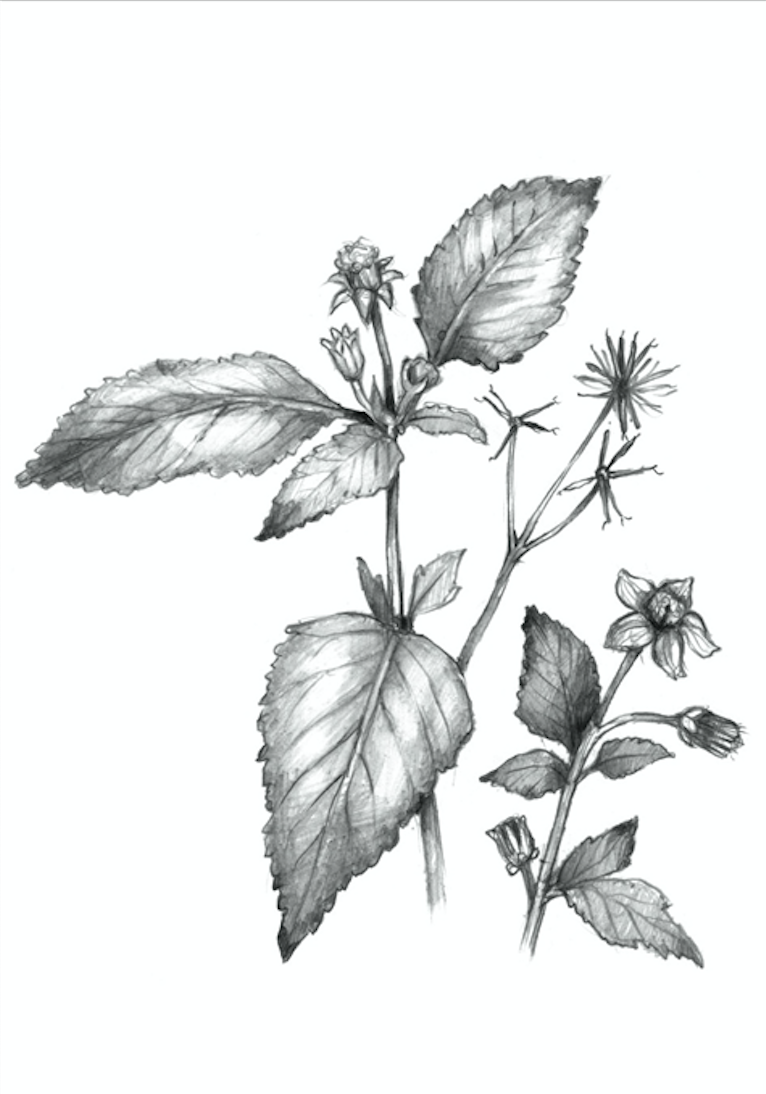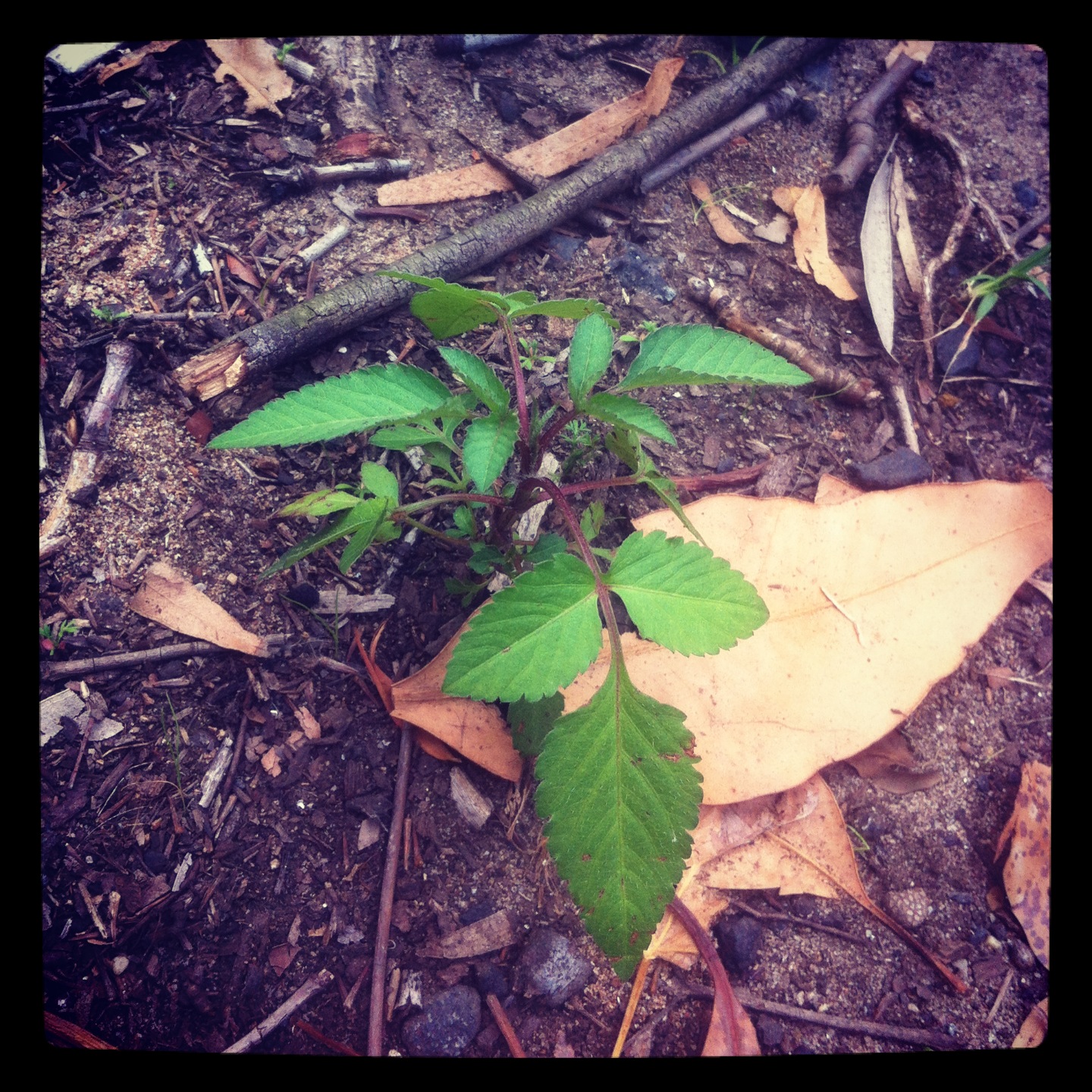Weeds as friends? Farmers friend: a nutritious and medicinal plant in everyone's garden.
I started a new garden. Again. I do that, I see a place and start to look after it.
This particular one I even asked for permission to the owner!
A small, two by four meters patch by the side of the house, with a sunny exposure for most of the day.
Garden, Dec 12, with existing and severely damaged grapevine, bird of paradise and lavender bush.
Garden, Jan 14, with a couple of tomato plants, a sage and a oregano bush planted, and the rest is compost presents or edible weeds.
My first step was to remove a wheelbarrow full of bricks and rabble that accumulated in it.
The second step has been to spread a wheelbarrow of compost on top. The patch liked it and four weeks on, it turned into a rewarding exercise in noticing nature’s work.
I rescued a number of plants from it, like a very old grapevine of unknown variety, and a couple of severely damaged bushes of lavender and birds of paradise. I then lanted a few more, like oregano, sage, coriander, cherry tomatoes and eggplants.
However, the best plants came up by themselves, some from the compost (like a proliferation of pumpkin-like seedlings) and others just turned up. ‘Weeds’ like sowthistle –sonchus spp- or purslane –portulaca oleracea- or chickweed –stellaria media- are very welcome in the garden. One, in particular, is the subject of this post: Cobblers peg –bidens pilosa.
Bidens have a great variety of common names, I love the list below from Wikipedia, a testimony of how much attention it gets from humans all over the world. My guess is because there is no chance you haven’t noticed this plant before. When I introduce it in my workshops, guests are a little puzzled at first and glaze away at the scientific name, but as soon as I get a fruiting head and brush it against my socks people recognize it right away. ‘ohh, that one! I know it! It is so boring and the seeds get stuck everywhere!’
That’s right, you know it too. Walk through some unkept area and you will find a bunch of fork-like seeds have stuck to your socks, your sleeves, your bag and your dog’s ears!
Guess what, that’s good! It got your attention. Now let me tell you what you are looking at:
Common names
This plant has many common names in different regions and languages, including:
Afrikaans language: knapsekêrel
Chinese: gui zhen cao
English: beggar's tick, beggar-ticks, hairy beggar-ticks, black-jack, broom stick, broom stuff, cobbler's pegs, devil's needles, hairy bidens, Spanish needle, farmers friend, Devils Pitchfork
Fijian: batimadramadra, matakaro, matua kamate, mbatikalawau, mbatimandramandra
French: bident hérissé, bident poilu, herbe d'aiguille, herbe villebague, piquants noirs
Gĩkũyũ: mũcege
Hawaiian: kī, nehe, kī nehe, kī pipili
Japanese: コセンダングサ (ko-sendangusa) and ひっつき虫 (hittsuki-mushi), which stands for plants with burs, or burs in general, are the common names.
Kifumbira: Inyabalasanya
Mangareva: tarou, taru
Māori: koheriki, kohiriki
Māori (Cook Islands): kamika tuarongo, piripiri, nīroa, piripiri nīroa, piripiri kerekere
Mufindi: Mabangalala
Niuean: kofetoga, kofetonga
Philippines: pisau-pisau
Bontoc language: nguad, puriket
Ivatan language: dadayem
Portuguese: amor-de-burro
Pukapukan: pilipili
Spanish: acetillo, amor seco, arponcito, asta de cabra, cacho de cabra, masquia, mazote, papunga chipaca, pega-pega, perca, sirvulaca; (Canary Islands) Amorsecano
Tahitian: piripiri
Tongan: fisi‘uli
Ukrainian: chereda
Vietnamese: xuyến chi
Wallisian: tae puaka
The typical forked seeds are the spreading strategy for Bidens pilosa, a common weed of disturbed land all over the world. Much maligned in some cultures and much loved in others. It is edible, sometimes cultivated and with some impressive medicinal properties.
In Traditional Chinese Medicine it is used for clearing heat and removing toxins, while it is also extensively sourced amongst many traditional healers of Africa and Hawaii. A juice made from the leaves is used to dress wounds and ulcers; decoction of the leaves is anti-inflammatory and promote good health while the whole plant is anti-rheumatic and is also used in enemas to treat intestinal ailments. Substances isolated from the leaves are bactericidal and fungicidal and are used in the treatment of thrush and candida.
Please read this report if interested in Chinese medicine or this one detailing the traditional medicinal uses from Africa.
Global spread of Bidens pilosa. Source: www.griis.org
But wait. This is also yummy! Even though some reports talk about strong taste, I found that if you try young shoots or flowers you will find it to have a pleasant, slightly bitter, highly aromatic taste.
I enjoy it pretty much everywhere, adding it as an herb to soups, sauces, stir-fries and more. Chefs have created amazing renderings like Paul Cooper with a bidens salsa verde (northern Italian style green sauce) or like when with Jared Ingersoll we made a Vietnamese style chicken salad with bidens, scotch thistle and rambling dock (also weeds). Imagine a cold, spicy, chicken salad with a flavoursome mix of bitter herb (bidens), sour leaves (rambling dock) and refreshing and crunchy celery-like scotch thistle’s stalks.
Inspired?
Check your garden, as you have it there already for sure.
Notes: This species is regarded as naturalised in Australia. However, it was collected by Banks & Solander from Botany Bay in 1770, suggesting that it is of pre-European introduction, perhaps via New Guinea. (from Australian Living Atlas)
Further links:
Wikipedia> wikipedia.org
Plant for a future> www.pfaf.org
Plant Resources of Tropical Africa> database.prota.org
Weedy database> www.db.weedyconnection.com
Disclaimer: All due care has been taken to provide correct information using personal experience and available documentation. However, I will take no responsibility for anything you will do with the provided content and associated links. You, and you only are responsible for the use to which you put this material.


